Pictures of Different Shapes of Clouds
Best cloud storage for photos and pictures: free and paid

Photos are precious things, worth storing safely in the cloud. With high-quality cameras on the back of every phone, photos are how we record our lives and capture meaningful moments, from family holidays to once-in-a-lifetime events.
Back in the day, making backups of your photos meant painstakingly transferring them to a hard drive or burning CDs. If you've been snapping pics long enough, you probably remember that these were always more expensive, and filled up far faster than you were expecting. Today, things are much easier thanks to the proliferation of affordable cloud storage services.
But storing photos with an online storage platform isn't simply more convenient than backing up to a physical medium, it's also safer as there's no chance you'll accidentally damage or lose a precious drive or CD. The best cloud storage services store your photos in data centers full of servers, and have professionals on hand to make sure your pictures stay secure.
Cloud storage websites are a great tool for backing up all manner of photos, from family snaps to professional portraits. In this guide, we've reviewed and ranked seven of the top options for the best cloud storage for photos available.
Check out our exclusive cloud storage and VPN deal:
The 3 best cloud storage services for photos right now
What is the best cloud storage for photos?
The internet is packed with great cloud storage services, many of which come with tools to help you organize and share your photos online. Finding the best cloud storage for photos is all about figuring out what features fit with your style of photography.
For example, photographers who love to share their work should look for a cloud storage service that supports the creation of public galleries. Some cloud providers like Flickr even feature social networking tools to help you connect with your audience.
One major advantage of using a cloud photo storage platform is convenience, as these services enable you to access your snaps whenever and wherever you can get online. IDrive and Adobe Creative Cloud, in particular, have powerful mobile applications that enable you to easily manage your cloud collection from iOS and Android devices. As a result, many photographers consider these two to offer the very best cloud storage for photos.
If you are an amateur photographer and not monetizing your photos, there's no reason to pay for an expensive cloud storage provider, as there are a ton of free or affordable options. Google Drive is arguably the best cloud storage service for those wanting to save cash, as it can be used to store an unlimited number of shots for free, though some resolution limits do apply.
The best cloud storage for photos available
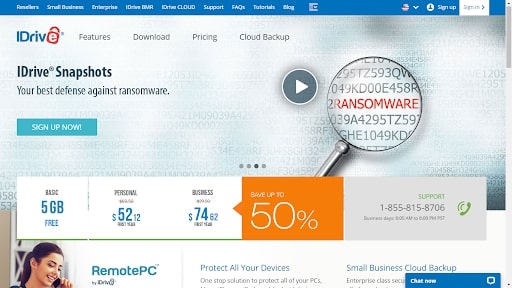
A secure way to store your photos online
Reasons to buy
+Rapid uploads and downloads +User-friendly web interface +Automatic image detection and uploading
Reasons to avoid
-Overage charges if you exceed storage limit -Prices may increase when your first-year discount ends
IDrive ranked top of our rundown of the best cloud storage services for general use, so it's not surprising that it's also a fantastic option for storing photos. You can connect your IDrive account to multiple devices, which is perfect for any photographers who shoot on more than one camera.
Also making IDrive one of the best cloud storage services for convenience is an Auto Camera setting. If you activate this, IDrive will automatically upload any new photos or videos that appear on the device, so you never have to worry about losing a shot.
Another cool iDrive feature is automatic facial recognition. If you have a large family or take a lot of portrait shots, this tool will automatically sort photos by the people in them, and facial detection information can be shared across any devices added to your IDrive account. Check out our IDrive personal cloud backup review for more information.
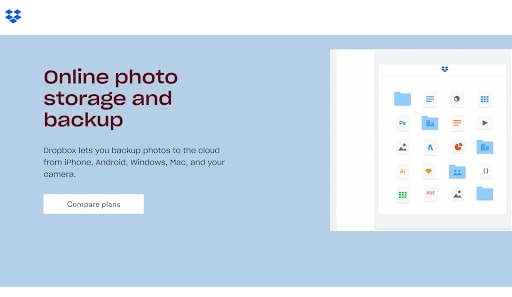
Flexible image storage in the cloud
Reasons to buy
+Proven network cloud infrastructure +Uploads your photos automatically +Easily restore a previous version of your gallery
Reasons to avoid
-Paid plan is quite pricey -Fewer photo-specific features than other platforms
With around 400 million users and storing approximately 600 billion pieces of content, Dropbox is one of the largest file storage platforms around. When you look at the features of this service, many of which are great for photos and images, it's easy to see why.
For starters, Dropbox simplifies the process of uploading photos. If you install the Dropbox app on a phone or tablet, you can activate an option to automatically transfer new images from your device's camera roll to your Dropbox account. You can also do this on a desktop device by telling the Dropbox Windows or macOS program to scan connected camera cards or mobile devices for images.
Once photos are uploaded, a helpful folder system will help you to organize them in your Dropbox account. Even better, if you want to edit photos after uploading, the Dropbox desktop app can sync your folders so that they appear in Windows Explorer or macOS Finder. Any modifications you make with photo editing software will be automatically detected and synced.
Besides this, Dropbox has some unique features that you won't find with many other cloud photo storage services, including a 30-day file version history viewer and a restore feature to protect you from accidental deletions.
You can get 2GB of free storage through Dropbox Basic accounts, which is a good starting point if you don't have too many photos. For a more reasonable capacity, it's worth upgrading to a Dropbox Plus subscription which, for $11.99 a month, will net you 2TB of storage space.
Free and paying Dropbox users can upgrade their storage capacity by referring the platform to a friend. Find out more about the platform by reading our Dropbox review.
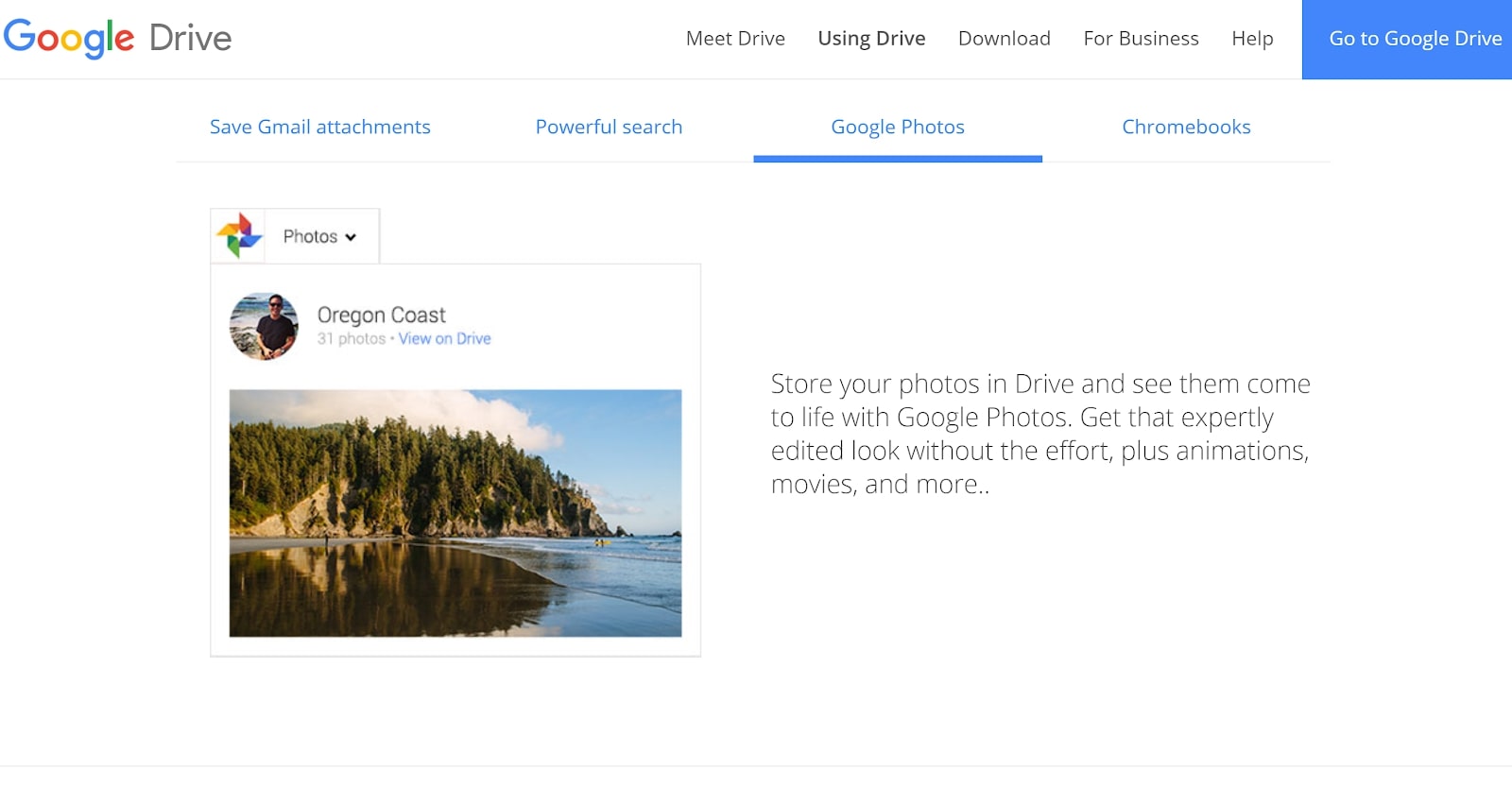
A powerful cloud storage service
Reasons to buy
+Connects to other Google productivity apps +AI recognizes and organizes photos by faces +Unlimited free storage for 16MP photos
Reasons to avoid
-Confusing connection between Google Drive and Google Photos -The scale of the platform is intimidating for some
Google Drive is more than just another storage app. This is a well-rounded cloud platform that connects to the comprehensive Google productivity suite which supports file sharing and collaborative document editing.
You can store your photos on Google Drive and sync live changes and edits from your desktop computer using Windows and macOS applications. However, Drive does lack some of the photography-oriented features found with other services on this list.
That's why the best way to use Google Drive to store your photos online is to use the connected Google Photos storage service. Until mid-2019, photos would sync automatically between Google Drive and Google Photos, but Google decided this was too confusing for users and discontinued the practice.
Today, photos can still be transferred from Google Drive to Google Photos, but once this is done, the two copies of the file are no longer linked. You can now use Google Photos to back up unlimited photos as long as they aren't larger than 16 megapixels.
Although that limit shouldn't cause a problem for family or holiday shots, professional photographers may wish to upgrade to a paid Google One membership, which removes any limit on photo size. Google One also expands the amount of Drive storage space you get for other file types.
Free Google Drive users get 15GB of storage, while Google One subscribers paying $1.99 per month receive 200GB. Subscriptions of up to 30TB capacity are available. To learn more about the cloud storage side of Google's offerings, read our full Google Drive review.
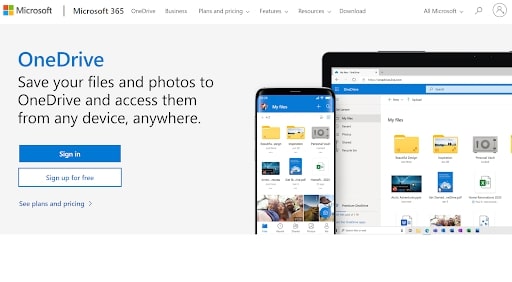
Strikes a balance between functionality and affordability
Reasons to buy
+Affordable multi-user plans +Get free access to useful office tools +Advanced photo search features
Reasons to avoid
-Not entirely focused on photography -5GB free space fills up fast
If you're looking for a straightforward cloud storage platform where you can store your photos without having to figure your way around lots of new and unfamiliar interfaces, Microsoft OneDrive is worth a look. Microsoft has intentionally made OneDrive's appearance similar to that of Windows 10, which means there's basically no learning curve for any Windows users moving to the platform.
OneDrive is a general-purpose cloud storage platform and its chief selling point is seamless integration with popular Microsoft 365 applications like Word and Excel. But that's not to say that OneDrive doesn't have some excellent photo management features. In fact, OneDrive supports tagging, photo search, and album creation.
OneDrive pricing is pretty affordable too. This service matches Google Drive's budget plan, with 100GB of space costing $1.99 a month. If you are a fan of Microsoft's productivity tools, a better option is to go with the Microsoft 365 Personal subscription which, for $69.99 a year, gives you 1TB of space and access to core Office apps.
Learn more about the service in our Microsoft OneDrive cloud storage review.
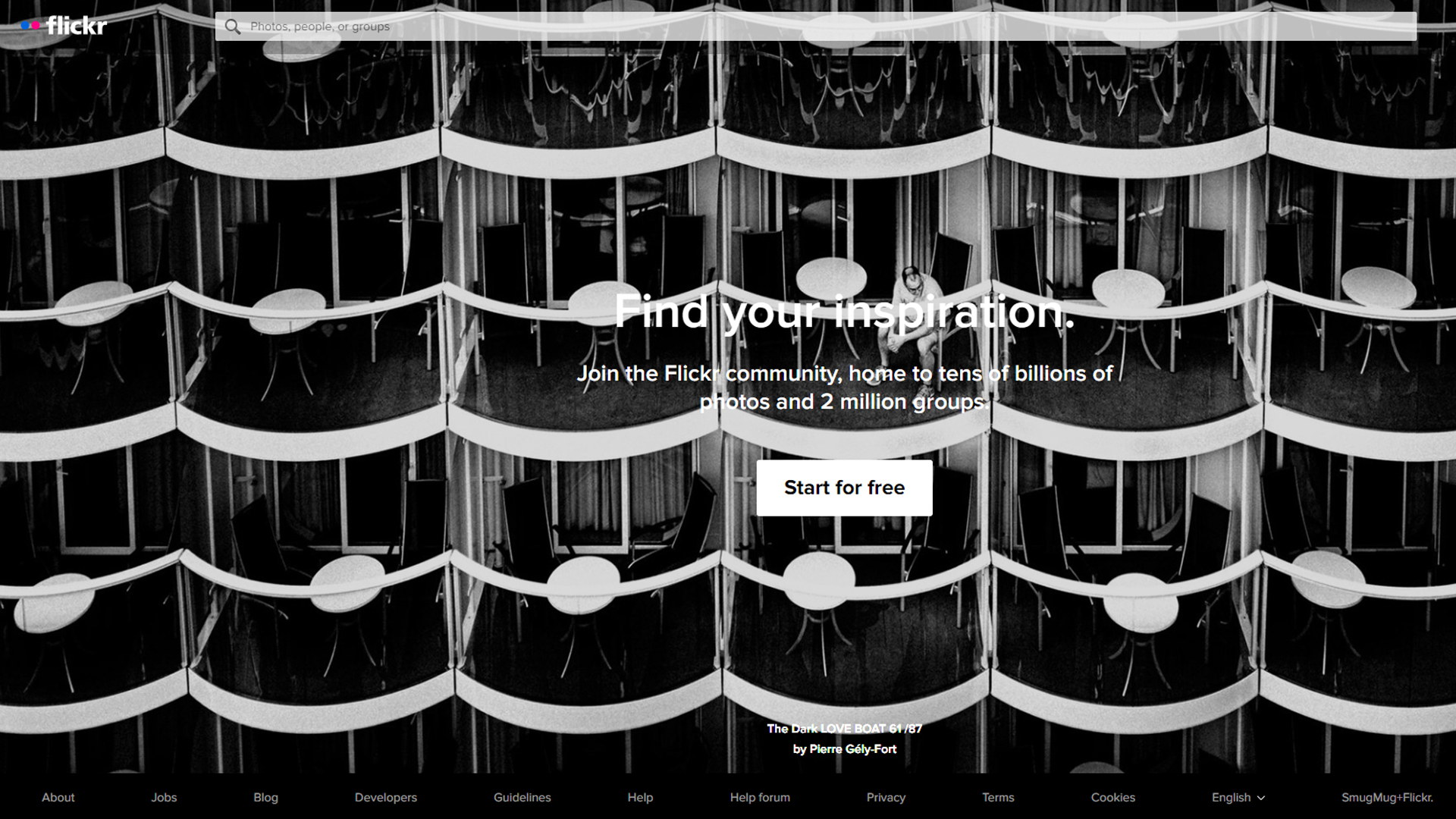
Free cloud photo storage if you don't mind compressed formats
Reasons to buy
+Paid accounts have no storage limits +Promote your photography +A beautiful way to show off your shots
Reasons to avoid
-Can't be used for RAW images -Free version is ad-supported
If you're looking for high-quality cloud photo storage on a budget, Flickr could be the right option. You can think of Flickr as a part cloud photo storage, part photo-sharing social network. It's one of the original photography sites to make it big on the web and has an estimated 87 million registered members.
Flickr lets you upload up to 1,000 photos and videos free of charge. To remove that limit, you can go for a Flickr Pro+ account instead. These cost $7 a month or $60 a year. Pro+ users aren't just freed from image storage limits, they can also see advanced statistics to understand which of their shots are generating the best response in the Flickr community.
The greatest thing about Flickr is that you can show off your photos in a classy photostream. Because this is a photo network, other users will be able to respond to your shots unless you make them private. Overall, Flickr is a good way to display and store your photos, but the one downside is that it can only handle compressed images, so this isn't the right place to keep your RAW files.
To find out more about the service and its features, read our Flickr review.

Amazing edit tools and affordable storage
Reasons to buy
+Integrates with Adobe image editing tools +Apps for pretty much any device +Use your library to build a photography site
Reasons to avoid
-20GB plan is expensive for the space you get -Works best if you commit to the Adobe ecosystem
As a photographer, you're probably already familiar with the Adobe suite of photo manipulation tools, but did you know that Adobe now also offers cloud photo storage options?
Through Adobe Creative Cloud, you can access three different cloud storage plans. Two of these come with 1TB of space, while the other includes 20GB. Prices are set at $9.99 or $19.99 a month. You can't store that many photos with the 20GB storage package, which is known as the Creative Cloud Photography Plan, but Adobe Photoshop and Lightroom both get thrown in for free with it.
Remember also that there's a seven-day free trial available with Creative Cloud, allowing you to try out the many apps across the service for free before you decide which paid plan to go for.
Considering that Photoshop and Lightroom are two of the best photo editing tools around, the 20GB option is still well worth it if you want to produce the best images possible. Managing your photos in Creative Cloud is a pleasant experience too, thanks to classy image galleries where you can explore your work or share shots with others.
With Group Libraries, collaborators can add photos to shared folders, though you can always make individual folders private. Adobe has created macOS, Windows, iOS, and Android Creative Cloud apps, so uploading is a breeze no matter what device you're using.
At the same time, direct integration with a range of other Adobe platforms including Lightroom, Photoshop, and Elements means you can always dive into an image to make adjustments.
Unsurprisingly, given Adobe's rich photo-editing pedigree, Creative Cloud is fully compatible with RAW images. As such, this is a suitable platform for professional photographers who don't want to lose quality when storing images. Read our Adobe Creative Cloud review focusing on its cloud storage to find out more.
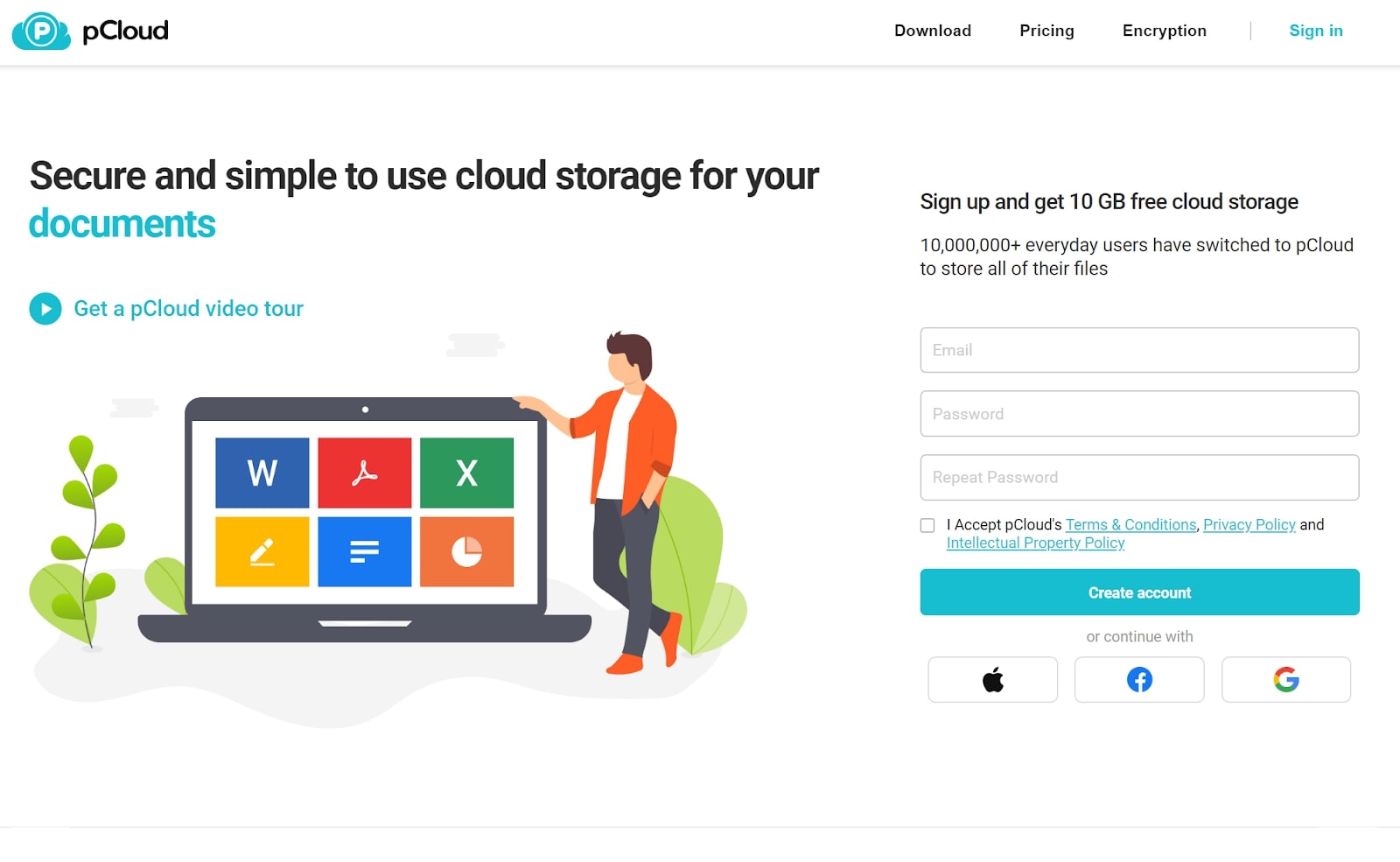
Makes modifying photos online convenient
Reasons to buy
+Works well with different photo file types +No monthly charges +Useful Lightroom plug-in
Reasons to avoid
-Pricey -Monthly download quota
Some cloud storage platforms are limited when it comes to modifying your photos once you've uploaded them, but that's not the case with pCloud. This service enables you to resize photos within your browser and archive older photos, so you can better focus on your favorite shots.
Advanced photographers will appreciate that pCloud automatically provides previews and thumbnail icons of uncompressed RAW format photos (which are better for editing). Also, pCloud can connect directly to Lightroom on Windows and macOS devices, so you can upload shots as soon as you're finished modifying them.
Another element that distinguishes pCloud from other cloud storage photos is pricing. While almost all competitors charge a monthly subscription, you can pay pCloud a one time fee for a lifetime of 500GB or 2TB of storage space.
Although the upfront cost is higher, many photographers prefer it, as you can pay once and forget about it. With pCloud, there's no need to worry about rates being increased over time, or your photos being deleted if you stop paying.
So that its unique payment system isn't abused, pCloud does limit the amount of data you can download or stream from your pCloud account each month. If you have a 2TB account, for example, you'll only be able to download 2TB of information from it in any given month.
In an image backup use-case, there's not normally a need to constantly download data from the cloud anyway, so this won't cause an issue for most photographers. Read our pCloud review for more information.
5 things to look for in the best cloud storage for photos
- Paid, free, or both: The majority of cloud photo storage services are what's known as "freemium". In other words, although they offer some storage space free of charge, extra room can only be unlocked by signing up for a monthly or annual subscription plan. Price per gigabyte can differ dramatically between services, so it's worth shopping around.
- Image format support: Almost any cloud storage service will allow you to upload compressed JPEG, PNG, or GIF photos. Unfortunately, however, the same can't be said for uncompressed RAW or TIFF files. If you work with these formats frequently, check if they're supported.
- Your own internet connection: Remember that the time it takes to upload and download images from the cloud will depend on the speed of your own connection to the web as well as the cloud storage service you pick. In short, you'll be better off investing in a physical storage medium instead if you don't have a swift internet service provider (ISP).
- Galleries: Some cloud photo sites go above and beyond by letting you create stunning photo sites and profiles to show off your compositions.
- Mobile photography: A major benefit of cloud storage is that you can access, edit, and share photos even when you're away from your workstation. Look out for cloud services that offer Android and iOS apps if this is something you want to take advantage of.
How to choose the best cloud storage for photos for you
There are plenty of great photo storage services out there, but how should you work out which is the right one for you? To figure out if a particular service will work for your use-case, take into account key factors such as how easy it is to access the platform from a mobile device and whether any gallery sharing features are included to help you promote your work.
Another important consideration is the size of your photo library and the number of images that you'd like to store online. The average 16 megapixel JPEG photo requires 4.8MB of space, so if you have a 500-photo back catalog to upload, you'll need to find a cloud photo plan that gives you at least 2.5GB of storage. Fortunately, most cloud storage services won't charge for that amount of space.
However, if you want to preserve original image information, you might wish to upload far larger RAW format files. 500 RAW 16 megapixel photos will take up approximately 2.5TB. In most cases, you'll require a monthly subscription for such a significant volume of storage.
- How to use Dropbox, OneDrive, Google Drive or iCloud as your main cloud storage
- Cloud storage vs external hard disk drive: Which one is better?
Pictures of Different Shapes of Clouds
Source: https://www.tomsguide.com/uk/buying-guide/best-cloud-storage-for-photos